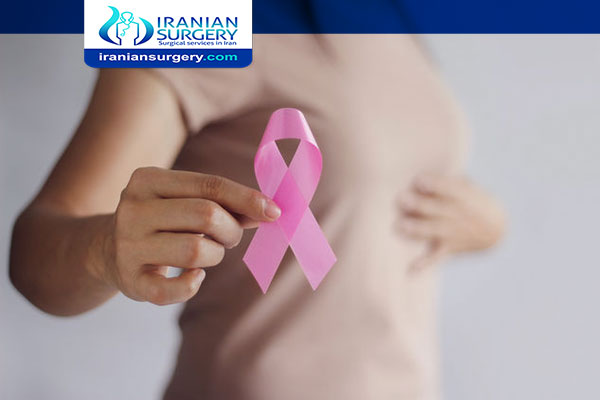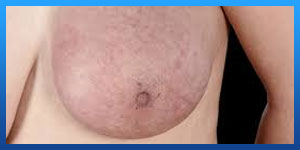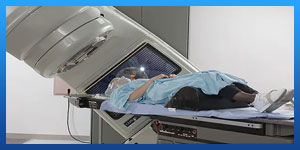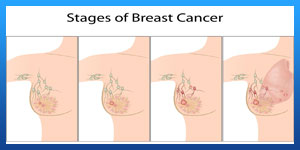Breast Cancer Treatment by Stage

Breast Cancer Treatment by Stage
Breast cancer stages range from 0-4. Each stage has different symptoms and treatment options.
Breast cancer has four stages, and a doctor uses the TNM staging system to identify which of these four stages the breast cancer has reached.

The letters TNM mean the following:
. T stands for tumor and indicates how much of the breast tissue is involved.
. N stands for nodes and indicates whether cancer has spread to the lymph nodes.
. M stands for metastasis and indicates whether cancer has spread to other parts of the body.
The TNM staging system also uses numbers. The numbers from 0-4 determine how advanced the cancer is.
The system is overseen by the American Joint Committee on Cancer (AJCC). This means all cancer doctors describe and classify the stages of cancer in the same way.
To determine which stage a person’s breast cancer has reached, a doctor will perform tests. Tests include blood tests, CT and PET scans, MRI’s, X-rays, including a mammogram, and ultrasounds.
Read more about : Treatment For Breast Cancer Stage 1
Read more about : Stage 2 breast cancer treatment timeline
Stage 0 breast cancer (DCIS)
A person with stage 0 breast cancer has a noninvasive cancer type.
This means that cancer has not spread anywhere else in the body and that the cancerous cells remain in the breast where they started growing.
Noninvasive breast cancer is also known as ductal carcinoma in situ (DCIS). It means cancer remains in the milk ducts.
Early diagnosis of stage 0 breast cancer means that a person can receive prompt treatment.
This might prevent cancer from turning into an invasive breast cancer type.

Treatment for stage 0 breast cancer
There is a variety of treatment options for stage 0 breast cancer, including:
. Surgery
A lumpectomy involves removing cancerous cells from the breast. It is an option when the cells remain in one area. This is a relatively short and simple procedure, and a person should be able to go home after the surgery on the same day.
If cancerous cells appear throughout the breast, the doctor may recommend a mastectomy, which involves removing the entire breast. Plastic surgeons can rebuild the breast at the same time or a later date.
. Radiation therapy
Radiation therapy can help kill cancer cells and inhibit them from spreading. A person will typically undergo radiation therapy once the breast surgery site has healed. This is usually 4-6 weeks after surgery.
. Hormone treatment or targeted therapy
Your doctor may recommend a hormone treatment if you’ve had a lumpectomy or single mastectomy for estrogen receptor-positive or progesterone receptor-positive breast cancer.
Oral hormone treatments, such as tamoxifen, are generally prescribed to lower your risk of developing invasive breast cancer. Hormone treatment may not be prescribed for women who have had a double mastectomy for stage 0 breast cancer.
Your doctor may also recommend trastuzumab (Herceptin), a targeted therapy, if your breast cancer tests positive for excessive HER2 proteins.
Stage 1 breast cancer
Stage 1 breast cancer means the cancerous cells are invading the surrounding breast tissue. Stage 1 breast cancer has two subcategories – 1A and 1B.
People with stage 1A breast cancer have breast cancer with:
. A tumor measuring no more than 2 centimeters (cm) in diameter that has not spread outside the breast.
People with stage 1B breast cancer have invasive breast cancer that can present as:
. No tumor in the breast, but the cancerous cells have formed into clusters that are between 0.2–2 (millimeters) mm in diameter and may also be in the lymph nodes.
. A tumor no larger than 2 cm growing in the breast alongside small groups of cancer cells measuring between 0.2–2 mm developing in the lymph nodes.
If this is the case and the cancer is ER+ or PR+, a doctor is still likely to classify it as stage 1A cancer.
Microscopic invasion is where cancer cells have begun to spread outside the milk duct lining or lobule. If microscopic invasion is present, doctors may still classify cancer as stage 1 breast cancer, providing these cells do not measure more than 1mm.
Treatment for stage 1 breast cancer
Doctors can offer a variety of treatment options for stage 1 breast cancer, although surgery is the primary treatment.
Read more about : Cervical cancer treatment
Read more about : Risk factors of cervical cancer
. Surgery
A lumpectomy or mastectomy are both viable surgical options for people with stage 1 breast cancer. A doctor will decide what surgery is most appropriate depending on the location of the primary tumor, how large it is, the size of the breast, family history, genetics, and the person’s preference.
Biopsy of the lymph nodes will probably be performed at the same time.
For mastectomy, reconstruction of the breast can begin at the same time if wanted, or after additional treatment is completed.

. Radiation therapy
Radiation therapy is a standard treatment for stage 1 breast cancer. However, a doctor may not recommend radiation therapy for people over 70 years old, particularly if hormone therapy is suitable.
. Hormone therapy
If the breast cancer is ER+ or PR+, hormone therapy may be effective. Hormone therapy works by preventing the growth of estrogen, which helps cancer grow. Hormone therapy can reach cancer cells in the breast as well as other areas of the body and reduces the risk of the cancer coming back.
. Chemotherapy
Before recommending chemotherapy, a doctor will test to see whether the cancer is hormone receptive.
If the test results show that the cancer is not receptive to estrogen and progesterone or to another protein called human epidermal growth factor receptor 2 (HER2), it is known as triple-negative breast cancer (TNBC).
Hormone therapy is ineffective against this cancer type, and people who have TNBC will usually need chemotherapy.
However, some people who do have ER+ or PR+ breast cancer may still undergo chemotherapy. A doctor may need to run a test on the tumor to help decide whether chemotherapy is appropriate.
Sometimes, doctors will recommend that people who have HER2+ breast cancer use Herceptin, which is a targeted therapy, alongside chemotherapy.
Stage 2 breast cancer
Stage 2 breast cancer also has subcategories known as 2A and 2B.
Stage 2A breast cancer is an invasive cancer where:
. There is no tumor growth in the breast itself, but cancerous masses that are over 2 mm in diameter are growing in up to three axillary lymph nodes (in and around the armpit) or lymph nodes near the breastbone.
. There is a tumor in the breast that is under 2 cm in diameter that has spread to the axillary lymph nodes.
. The tumor is 2–5 cm in diameter but has not spread to the axillary lymph nodes.
Stage 2B breast cancer is an invasive breast cancer where:
. A tumor that measures 2–5 cm in diameter is growing in the lymph nodes alongside clusters of cancerous cells. These cancerous cells form groups between 0.2 mm–2 mm in size.
. There is a tumor that is 2–5 cm in diameter, and cancerous cells have spread to one to three axillary lymph nodes or lymph nodes by the breastbone.
. The tumor is larger than 5 cm, but cancerous cells have not spread to the axillary lymph nodes.
Treatment for stage 2 breast cancer
The most common type of treatment for stage 2 breast cancer is surgery.
. Surgery
In most cases, treatment involves removing the cancer.
A person with stage 2A or 2B breast cancer may undergo a lumpectomy or mastectomy. The doctors and the individual can decide based on the size and location of the tumor.
. Radiation therapy
Radiation therapy targets any remaining cancer cells in the chest and lymph nodes. It’s often recommended after surgery.
. Chemotherapy
Chemotherapy is a systemic therapy to kill cancer cells throughout the body. These powerful drugs are delivered intravenously (into a vein) over the course of many weeks or months.
There are a variety of chemotherapy drugs used to treat breast cancer, including:
. Docetaxel (Taxotere)
. Doxorubicin (Adriamycin)
. Cyclophosphamide (Cytoxan)
You may receive a combination of several chemotherapy drugs. Chemotherapy is particularly important for TNBC. Herceptin is given along with chemotherapy for HER2-positive breast cancers.
Your doctor may also recommend other HER2-targeted therapies, such as Perjeta or Nerlynx.
. Hormone treatment
After all other treatment is complete, you may benefit from continued treatment for hormone-positive breast cancers.
Oral medications such as tamoxifen or aromatase inhibitors may be prescribed for five or more years.
. Combination therapy
A doctor may recommend a combination of radiation therapy, chemotherapy, and hormone therapy (if the cancer is hormone receptive) to people with stage 2A or 2B breast cancer.
Stage 3 breast cancer
The subcategories for stage 3 breast cancer are 3A, 3B, and 3C.
3A breast cancer is an invasive breast cancer where:
. There is no tumor in the breast, or a tumor of any size is growing alongside cancer found in four to nine axillary lymph nodes or the lymph nodes by the breastbone.
. A person has a tumor greater than 5 cm, as well as clusters of breast cancer cells in the lymph nodes that are between 0.2–2 mm in diameter.
. The tumor is larger than 5 cm, and cancer has also spread to one to three axillary lymph nodes or the lymph nodes near the breastbone.
Stage 3B breast cancer is invasive breast cancer where:
. A tumor of any size has spread into the chest wall or skin of the breast, causing swelling or an ulcer to develop. It could also have spread to up to nine axillary lymph nodes or may have spread to lymph nodes by the breastbone.
If cancer spreads to the skin of the breast, a person may have inflammatory cancer.
Symptoms of inflammatory breast cancer include:
. The skin of the breast turning red
. Swelling of the breast
. The breast feeling unnaturally warm
Stage 3C breast cancer is an invasive breast cancer where:
. There is no actual tumor in the breast, or the tumor may be any size and has spread into the wall of the chest or the skin of the breast. Cancer may also be present in 10 or more axillary lymph nodes.
. Cancer has spread to a person’s lymph nodes above or below the collarbone or axillary lymph nodes or lymph nodes located close the breastbone.
Treatment for stage 3 breast cancer
Treatment for people with stage 3 breast cancer includes chemotherapy, surgery, and radiation. Typically, doctors administer the chemotherapy before performing the surgery in an attempt to shrink a tumor.
People with stage 3 breast cancer will probably need radiation therapy to kill off any remaining cancer cells. Doctors may also recommend hormone therapy, as well as additional targeted therapies, if necessary.
Stage 4 breast cancer
A person with stage 4 breast cancer has cancer that has spread not only to the nearby lymph nodes but also to more distant lymph nodes and other organs in the body.
Stage 4 breast cancer is the most advanced stage. It is also known as secondary or metastatic breast cancer. Stage 4 breast cancer may be recurrent breast cancer that has now spread to other parts of a person’s body.
Treatment for stage 4 breast cancer
Typically, treatment for stage 4 breast cancer includes a combination of chemotherapy, radiation therapy, and hormone therapy (if appropriate).
Targeted therapy is a treatment that targets the protein that allows cancer cells to grow and this type of therapy may also be an option for people with stage 4 breast cancer.
Sometimes, surgeons will operate to try and remove tumors though this is not usually the first option for treatment.
Doctors, however, may recommend surgery to help with pain relief by treating some of the issues that may develop as a result of having stage 4 breast cancer. These include spinal cord compression, removing single masses caused by metastasis, and fixing any broken bones.
A doctor may also prescribe medication to treat related symptoms such as:
. Antidepressants to help mood
. Anticonvulsants to manage pain or neurologic conditions
. Local anesthetics to manage pain
New treatments and therapies are emerging all the time, and anyone who has breast cancer at any stage can volunteer to try out these new treatments. People considering this should talk to their doctor to see whether any trials are available in their area.
Trials for a new treatment called immunotherapy are currently taking place. Immunotherapy works by raising the body’s natural ability to fight off cancer and has fewer side effects than chemotherapy.
The U.S. Food and Drug Administration (FDA) have not yet approved immunotherapy, but anyone who wishes to put themselves forward for these trials should discuss their options and suitability with their doctor.

About Iranian Surgery
Iranian surgery is an online medical tourism platform where you can find the best Surgeons to treat your Breast cancer in Iran. The price of treating a Breast cancer in Iran can vary according to each individual’s case and will be determined by the type of treatment you have and an in-person assessment with the doctor. So if you are looking for the cost of Breast cancer treatment in Iran, you can contact us and get free consultation from Iranian surgery.
More about the TNM staging system
As well as numbers, a zero or an ‘X’ often follow the letters T, N, and M. According to the AJCC, the meanings are as follows:
. TX means doctors do not have information about the presence or size of the tumor.
. T0 means no evidence of an invasive primary tumor is present. This indicates that the cancer is “in situ” (which means that the tumor has not yet grown into healthy breast tissue).
. NX means doctors do not have information about the lymph nodes
. N0 means there is no evidence of cancer in the nearby lymph nodes
. MX means doctors do not have information about metastasis
. M0 means no evidence of distant metastasis is present
Breast cancer treatment considerations
The stages of breast cancer give a doctor an indication of how developed the breast cancer is and the kind of treatment options that may be effective.
There are, however, other factors that doctor’s take into consideration when determining how successful a specific type of breast cancer treatment might be.
These include:
. Age: Those under 40 tend to have more aggressive breast cancers.
. Pregnancy: Doctors may delay chemotherapy until the second or third trimester and delay hormone and radiation therapy until after the baby is born.
. How fast cancer grows and spreads: More aggressive cancers require more aggressive treatments.
. Family history: People whose close relatives have experienced breast cancer are more likely to experience it themselves.
. Genetic mutation status: If someone tests positive for the breast cancer genes known as BRCA1 (Breast Cancer gene one) and BRCA2 (Breast Cancer gene two), their risk of developing breast cancer increases significantly. Some people may require tests for other genes associated with breast cancer.
Outlook
A person’s outlook depends on early diagnosis and the stage of their cancer. The earlier a person receives treatment, the better the prognosis.
People should routinely check for any signs of breast cancer by performing monthly breast exams and should talk to their doctor about having regular mammograms.
Some people may need to begin screening earlier than others depending on their risk factors. Discuss this with the doctor. Other people may be candidates to start screening later, but it is a good idea to share the decision making with a doctor who will be able to advise on the best way forward.
Treatment depends on many factors, including the stage of breast cancer, family history, genetics and a person’s personal preferences. Doctors will tailor treatment to each individual and will adjust it depending on how well a person responds initially.

